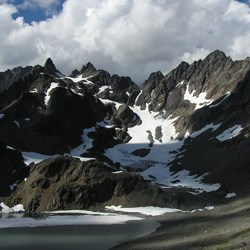Camping
Food Storage Method: Some community bear wires are available along this route. For the latest status on which bear wires are still usable, visit our Wilderness Interactive Map page. Bear canisters are required in the Anderson Pass and Anderson Moraine area.
Campsites: Dose Forks, Big Timber, Diamond Meadows, Honeymoon Meadows, Lacrosse Pass Junction, Camp Siberia
Toilet Facilities: Pit toilets are located at Big Timber, Diamond Meadows, Honeymoon Meadows, and Camp Siberia. In other areas, bury human waste 6-8" deep and at least 200 feet from campsites or water. Pack out your toilet paper.
Water Source: West Fork Dosewallips River and tributary streams. There is very little water at Anderson Pass. Always boil, filter, or chemically treat your drinking water to prevent getting Giardia.
Stock: Allowed. Stock groups must camp in designated stock camps located at Big Timber and Diamond Meadows. Visit our Trail Conditions page to see the latest status on accessibility to stock.




